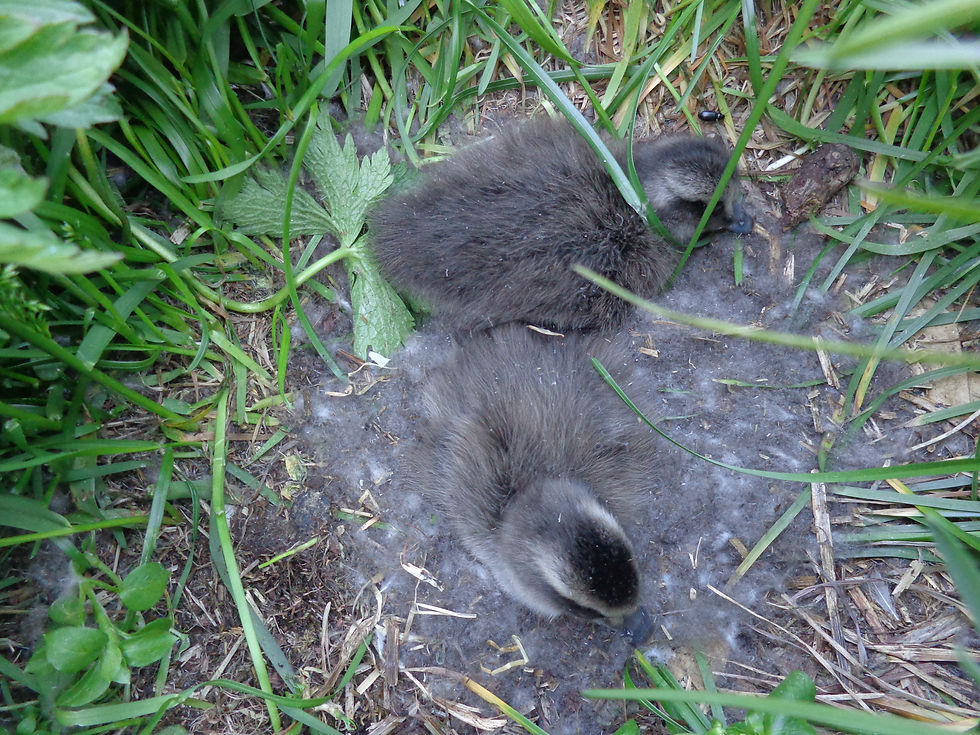We are sinking!
- Krista
- Dec 4, 2017
- 4 min read
Updated: Apr 6, 2021

Since the day we arrived on the farm Jamie was eagerly waiting for the right day. The weather had to be right and we had to have a day off. He had eyed up this long, light blue canoe that was lying in the shed covered with dust. It was time to open the canoeing season! One morning we were meant to go to a nearby island with family friends for a day off, but they rescheduled the boat trip for the evening. The sun was shining, only a few fatherly clouds were slowly sliding across the light blue sky and the wind was moderate. Finn, one of Halla's children, a young tall man, with typical pale Icelandic skin, strawberry blond hair and ginger tinge to his stubble, helped us to take the canoe upstream. We both had previous experience in using single kayaks on lochs (lakes) in Scotland and calm coastal waters in France, but we have never operated a canoe on a river.
Full of enthusiasm and hope we shoved off into the current, however, within the first 10 metres the canoe stopped. We had chosen the shallow part of the river and got stock on some pebbles. Soon we learned to plunge into the fast flowing current and let the river take care of our course. The river meandered past overgrown pastures, where lush grass was now thriving since the pressure of constant sheep grazing had stopped. Now these fields provided a great habitat and shelter for various birds, their songs now filled the wide valley and echoed into our ears. Birki (birch) carpets now covered much of the steep hillsides rising up to our left. In-between the thickets of birch trees hid a marvelous and powerful waterfall that cut through the hard rock creating a steep gorge. A walk to the waterfall was on our Iceland's "bucket list".
As we proceeded down the shallow river with a few rougher rapids and some sharp corners, we managed to develop some sort of technique. We were getting a hang of it. I looked down, the water we had in the canoe seemed to slowly getting deeper and deeper. The water was slowly seeping through a crack on the bottom of our little vessel. We had to stop every 20 minutes to empty the boat so we don't sink! Despite everything we enjoyed our little adventure on the river. The sun was glittering in the rapids, bird songs fell to our ears, aggressive terns were shooting above our heads protecting their nests, and the air temperature was cool and refreshing.
We knew our stop would come up after a few more meanders. As we maneuvered through the last corner, we noticed the friendly smile behind the long camera lens. There was Loi, Halla's husband, with his white hair tied in a pony tail fluttering in the wind. He was trying to get last few snaps of us trying to dock the canoe.

In the afternoon, full of excitement from our earlier adventures in the morning, we headed off for the island. A little rib boat was flying over the ocean waves. The boat ride took about 20 minutes. The family, who own the island goes there every year to pick eider duck down. We were shown the process of harvesting down without harming the birds or their nests. Everyone walked together and systematically scanned the shoreline. Look before you step. Once you have located the nest, you wait for the mother duck to leave. Carefully pick up any eggs or chicks in the nest, take 2/3 of the down, place eggs or chicks back, cover the nest with a small cluster of dry grass to hide it from predators until the mother duck returns. Eider ducks actually did not mind their down being harvested. Since people started doing it on regular basis, the number of breeding pairs has increased. The human presence keeps predators, such as arctic fox, Vulpes lagopus, and gulls, Larus, away and provide extra protection to nesting ducks.
After having a go at harvesting down, we set off to explore the little island. Jamie was excited, as this was his first sighting of a puffin. The north side of the island was covered in the nesting burrows of puffins! It was a late evening and all puffins were returning from a day out fishing. Hundreds of them were flying past the cliffs and trying to land at their burrows. Puffins remind me of little clowns. They have huge colourful beaks and fat round bodies, and a pair of wings, too short for flying. They flap their wings frantically to keep themselves in the air. Thus they are not capable of gliding gracefully..

The dirt road back to the farm (or as we said - home) led along the shoreline. It was winding around high rocky outcrops, dramatic sea cliffs and along old pastures. Large amounts of driftwood was scattered all along the pebble beach. One of the farmers had gathered some of the sun bleached driftwood and piled up in a high tower.



Comments